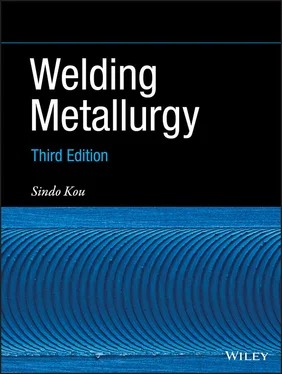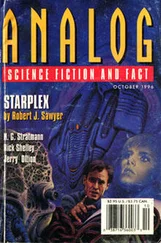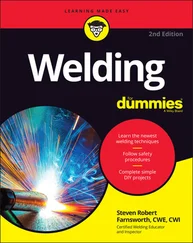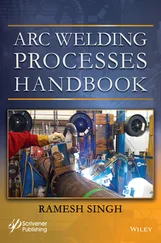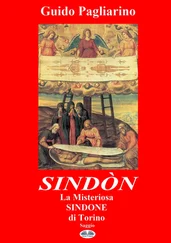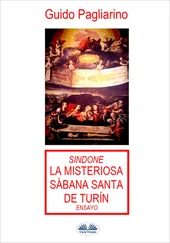1 Cover
2 Preface to Third Edition
3 Part I: Introduction 1 Welding Processes 1.1 Overview 1.2 Gas Welding 1.3 Arc Welding 1.4 High‐Energy‐Beam Welding 1.5 Resistance Spot Welding 1.6 Solid‐State Welding References Further Reading Problems 2 Heat Flow in Welding 2.1 Heat Source 2.2 Heat Flow During Welding 2.3 Effect of Welding Conditions 2.4 Computer Simulation 2.5 Weld Thermal Simulator References Further Reading Problems 3 Fluid Flow in Welding 3.1 Fluid Flow in Arcs 3.2 Effect of Metal Vapor on Arcs 3.3 Arc Power‐ and Current‐Density Distributions 3.4 Fluid Flow in Weld Pools 3.5 Flow Oscillation and Ripple Formation 3.6 Active Flux GTAW 3.7 Resistance Spot Welding References Further Reading Problems 4 Mass and Filler–Metal Transfer 4.1 Convective Mass Transfer in Weld Pools 4.2 Evaporation of Volatile Solutes 4.3 Filler‐Metal Drop Explosion and Spatter 4.4 Spatter in GMAW of Magnesium 4.5 Diffusion Bonding References Problems 5 Chemical Reactions in Welding 5.1 Overview 5.2 Gas–Metal Reactions 5.3 Slag–Metal Reactions References Further Reading Problems 6 Residual Stresses, Distortion, and Fatigue 6.1 Residual Stresses 6.2 Distortion 6.3 Fatigue References Further Reading Problems
4 Part II: The Fusion Zone 7 Introduction to Solidification 7.1 Solute Redistribution During Solidification 7.2 Constitutional Supercooling 7.3 Solidification Modes 7.4 Microsegregation Caused by Solute Redistribution 7.5 Secondary Dendrite Arm Spacing 7.6 Effect of Dendrite Tip Undercooling 7.7 Effect of Growth Rate 7.8 Solidification of Ternary Alloys References Further Reading Problems 8 Solidification Modes 8.1 Solidification Modes 8.2 Dendrite Spacing and Cell Spacing 8.3 Effect of Welding Parameters 8.4 Refining Microstructure Within Grains References Further Reading Problems 9 Nucleation and Growth of Grains 9.1 Epitaxial Growth at the Fusion Line 9.2 Nonepitaxial Growth at the Fusion Line 9.3 Growth of Columnar Grains 9.4 Effect of Welding Parameters on Columnar Grains 9.5 Control of Columnar Grains 9.6 Nucleation Mechanisms of Equiaxed Grains 9.7 Grain Refining 9.8 Identifying Grain‐Refining Mechanisms 9.9 Grain‐Boundary Migration References Further Reading Problems 10 Microsegregation 10.1 Microsegregation in Welds 10.2 Effect of Travel Speed on Microsegregation 10.3 Effect of Primary Solidification Phase on Microsegregation 10.4 Effect of Maximum Solid Solubility on Microsegregation References Further Reading Problems 11 Macrosegregation 11.1 Macrosegregation in the Fusion Zone 11.2 Quick Freezing of One Liquid Metal in Another 11.3 Macrosegregation in Dissimilar‐Filler Welding 11.4 Macrosegregation in Dissimilar‐Metal Welding 11.5 Reduction of Macrosegregation 11.6 Macrosegregation in Multiple‐Pass Welds References Further Reading Problems 12 Some Alloy‐Specific Microstructures and Properties 12.1 Austenitic Stainless Steels 12.2 Low‐Carbon, Low‐Alloy Steels 12.3 Ultralow Carbon Bainitic Steels 12.4 Creep‐Resistant Steels References Further Reading Problems 13 Solidification Cracking 13.1 Characteristics of Solidification Cracking 13.2 Theories of Solidification Cracking 13.3 Binary Alloys and Analytical Equations 13.4 Solidification Cracking Tests 13.5 Solidification Cracking of Stainless Steels 13.6 Factors Affecting Solidification Cracking 13.7 Reducing Solidification Cracking References Further Reading Problems 14 Ductility‐Dip Cracking 14.1 Characteristics of Ductility‐Dip Cracking 14.2 Theories of Ductility‐Dip Cracking 14.3 Test Methods 14.4 Ductility‐Dip Cracking of Ni‐Base Alloys 14.5 Ductility‐Dip Cracking of Stainless Steels References Further Reading Problems
5 Part III: The Partially Melted Zone 15 Liquation in the Partially Melted Zone 15.1 Formation of the Partially Melted Zone 15.2 Liquation Mechanisms 15.3 Directional Solidification of Liquated Material 15.4 Grain‐Boundary Segregation 15.5 Loss of Strength and Ductility 15.6 Hydrogen Cracking 15.7 Effect of Heat Input 15.8 Effect of Arc Oscillation References Problems 16 Liquation Cracking 16.1 Liquation Cracking in Arc Welding 16.2 Liquation Cracking in Resistance Spot Welding 16.3 Liquation Cracking in Friction Stir Welding 16.4 Liquation Cracking in Dissimilar‐Metal FSW References Problems
6 Part III: The Heat-Affected Zone 17 Introduction to Solid‐State Transformations 17.1 Work‐Hardened Materials 17.2 Heat‐Treatable Al Alloys 17.3 Heat‐Treatable Ni‐Base Alloys 17.4 Steels 17.5 Stainless Steels References Problems 18 Heat‐Affected‐Zone Degradation of Mechanical Properties 18.1 Grain Coarsening 18.2 Recrystallization and Grain Growth 18.3 Overaging in Al Alloys 18.4 Dissolution of Precipitates in Ni‐Base Alloys 18.5 Martensite Tempering in Dual‐Phase Steels References Problems 19 Heat‐Affected‐Zone Cracking 19.1 Hydrogen Cracking in Steels 19.2 Stress‐Relief Cracking in Steels 19.3 Lamellar Tearing in Steels 19.4 Type‐IV Cracking in Grade 91 Steel 19.5 Strain‐Age Cracking in Ni‐Base Alloys References Further Reading Problems 20 Heat‐Affected‐Zone Corrosion 20.1 Weld Decay of Stainless Steels 20.2 Weld Decay of Ni‐Base Alloys 20.3 Knife‐Line Attack of Stainless Steels 20.4 Sensitization of Ferritic Stainless‐Steel Welds 20.5 Stress Corrosion Cracking of Austenitic Stainless Steels References Further Reading Problems
7 Part V: Special Topics 21 Additive Manufacturing 21.1 Heat and Fluid Flow 21.2 Residual Stress and Distortion 21.3 Lack of Fusion and Gas Porosity 21.4 Grain Structure 21.5 Solidification Cracking 21.6 Liquation Cracking 21.7 Graded Transition Joints 21.8 Further Discussions References Further Reading Problems 22 Dissimilar‐Metal Joining 22.1 Introduction 22.2 Arc and Laser Joining 22.3 Resistance Spot Welding 22.4 Friction Stir Welding 22.5 Other Solid‐State Welding Processes References Further Reading Problems 23 Welding of Magnesium Alloys 23.1 Spatter 23.2 Porosity 23.3 Internal Oxide Films 23.4 High Crowns 23.5 Grain Refining 23.6 Solidification Cracking 23.7 Liquation Cracking 23.8 Heat‐Affected Zone Weakening References Further Reading Problems 24 Welding of High‐Entropy Alloys and Metal‐Matrix Nanocomposites 24.1 High‐Entropy Alloys 24.2 Metal‐Matrix Nanocomposites References Further Reading Problems
8 Appendix AAnalytical Equations for Susceptibility to Solidification Cracking
9 Index
10 End User License Agreement
1 Chapter 1 Table 1.1 Overview of welding processes. Source: Welding Handbook [3], vol 1,... Table 1.2 Ionization potentials for gases involved in arc welding.
2 Chapter 2 Table 2.1 Thermal properties of some common materials.
3 Chapter 5Table 5.1 Effect of nitrogen, oxygen, and hydrogen on weld soundness.Table 5.2 Protection techniques in fusion welding processes.Table 5.3 Free energy of reactions involving nitrogen, oxygen, and hydrogen.Table 5.4 Effect of oxygen/acetylene ratio on the weld metal composition and ...
4 Chapter 6Table 6.1 Typical thermal treatments for stress relieving of weldments.
5 Chapter 9Table 9.1 Easy growth directions.
6 Chapter 11Table 11.1 Compositions of base metal A35 steel, filler metal 309 L and resul...Table 11.2 Cr and Ni equivalents of the bulk weld metal of the weld shown in ...Table 11.3 Compositions of base metal 309 stainless steel, filler metal ER70 ...Table 11.4 Cr and Ni equivalents of the bulk weld metal of the weld shown in ...
7 Chapter 12Table 12.1 Nominal composition of P91 steel.Table 12.2 Compositions of P91 steel welds with high and low Al contents.
8 Chapter 13Table 13.1 Guide to the choice of filler metals for minimizing solidification...
9 Chapter 16Table 16.1 Compositions of workpiece and filler wires in wt% (balance: Al) us...Table 16.2 Weld‐metal dilution levels and compositions in wt% (balance: Al).Table 16.3 Weld‐metal dilutions and compositions (in wt%) in circular‐patch w...
Читать дальше
